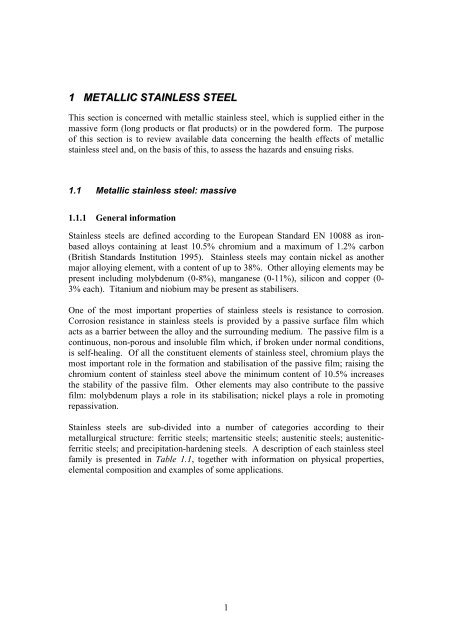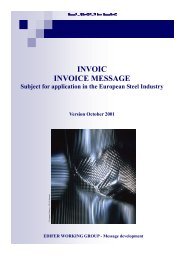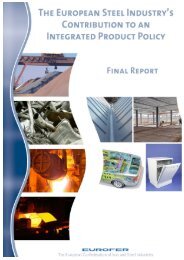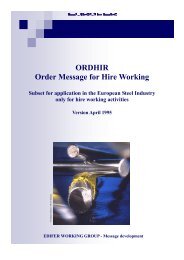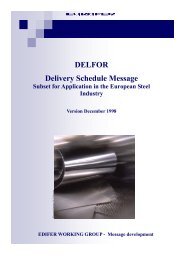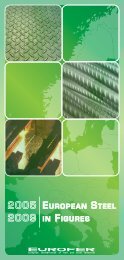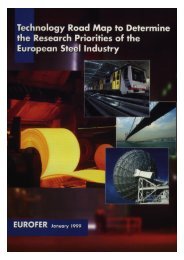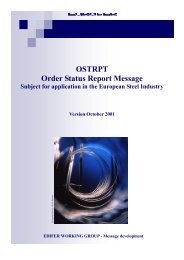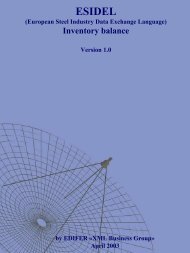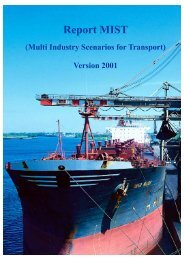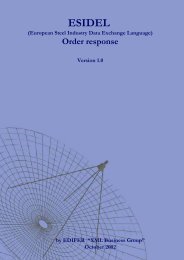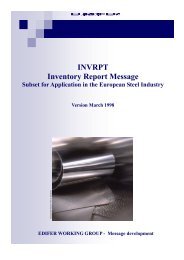manufacture, processing and use of stainless steel - International ...
manufacture, processing and use of stainless steel - International ...
manufacture, processing and use of stainless steel - International ...
Create successful ePaper yourself
Turn your PDF publications into a flip-book with our unique Google optimized e-Paper software.
1 METALLIC STAINLESS STEEL<br />
This section is concerned with metallic <strong>stainless</strong> <strong>steel</strong>, which is supplied either in the<br />
massive form (long products or flat products) or in the powdered form. The purpose<br />
<strong>of</strong> this section is to review available data concerning the health effects <strong>of</strong> metallic<br />
<strong>stainless</strong> <strong>steel</strong> <strong>and</strong>, on the basis <strong>of</strong> this, to assess the hazards <strong>and</strong> ensuing risks.<br />
1.1 Metallic <strong>stainless</strong> <strong>steel</strong>: massive<br />
1.1.1 General information<br />
Stainless <strong>steel</strong>s are defined according to the European St<strong>and</strong>ard EN 10088 as ironbased<br />
alloys containing at least 10.5% chromium <strong>and</strong> a maximum <strong>of</strong> 1.2% carbon<br />
(British St<strong>and</strong>ards Institution 1995). Stainless <strong>steel</strong>s may contain nickel as another<br />
major alloying element, with a content <strong>of</strong> up to 38%. Other alloying elements may be<br />
present including molybdenum (0-8%), manganese (0-11%), silicon <strong>and</strong> copper (0-<br />
3% each). Titanium <strong>and</strong> niobium may be present as stabilisers.<br />
One <strong>of</strong> the most important properties <strong>of</strong> <strong>stainless</strong> <strong>steel</strong>s is resistance to corrosion.<br />
Corrosion resistance in <strong>stainless</strong> <strong>steel</strong>s is provided by a passive surface film which<br />
acts as a barrier between the alloy <strong>and</strong> the surrounding medium. The passive film is a<br />
continuous, non-porous <strong>and</strong> insoluble film which, if broken under normal conditions,<br />
is self-healing. Of all the constituent elements <strong>of</strong> <strong>stainless</strong> <strong>steel</strong>, chromium plays the<br />
most important role in the formation <strong>and</strong> stabilisation <strong>of</strong> the passive film; raising the<br />
chromium content <strong>of</strong> <strong>stainless</strong> <strong>steel</strong> above the minimum content <strong>of</strong> 10.5% increases<br />
the stability <strong>of</strong> the passive film. Other elements may also contribute to the passive<br />
film: molybdenum plays a role in its stabilisation; nickel plays a role in promoting<br />
repassivation.<br />
Stainless <strong>steel</strong>s are sub-divided into a number <strong>of</strong> categories according to their<br />
metallurgical structure: ferritic <strong>steel</strong>s; martensitic <strong>steel</strong>s; austenitic <strong>steel</strong>s; austeniticferritic<br />
<strong>steel</strong>s; <strong>and</strong> precipitation-hardening <strong>steel</strong>s. A description <strong>of</strong> each <strong>stainless</strong> <strong>steel</strong><br />
family is presented in Table 1.1, together with information on physical properties,<br />
elemental composition <strong>and</strong> examples <strong>of</strong> some applications.<br />
1


